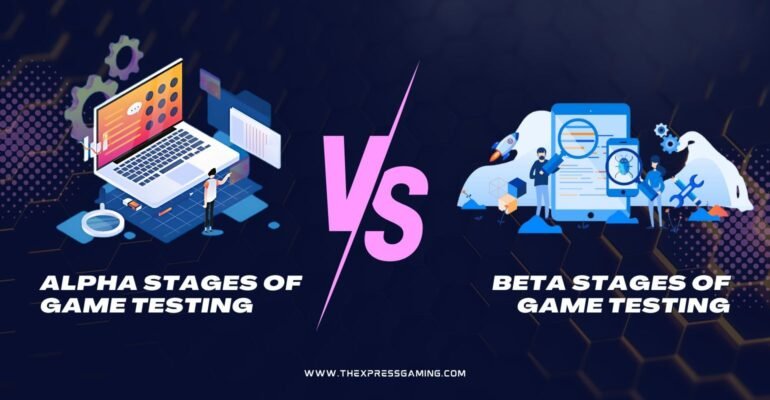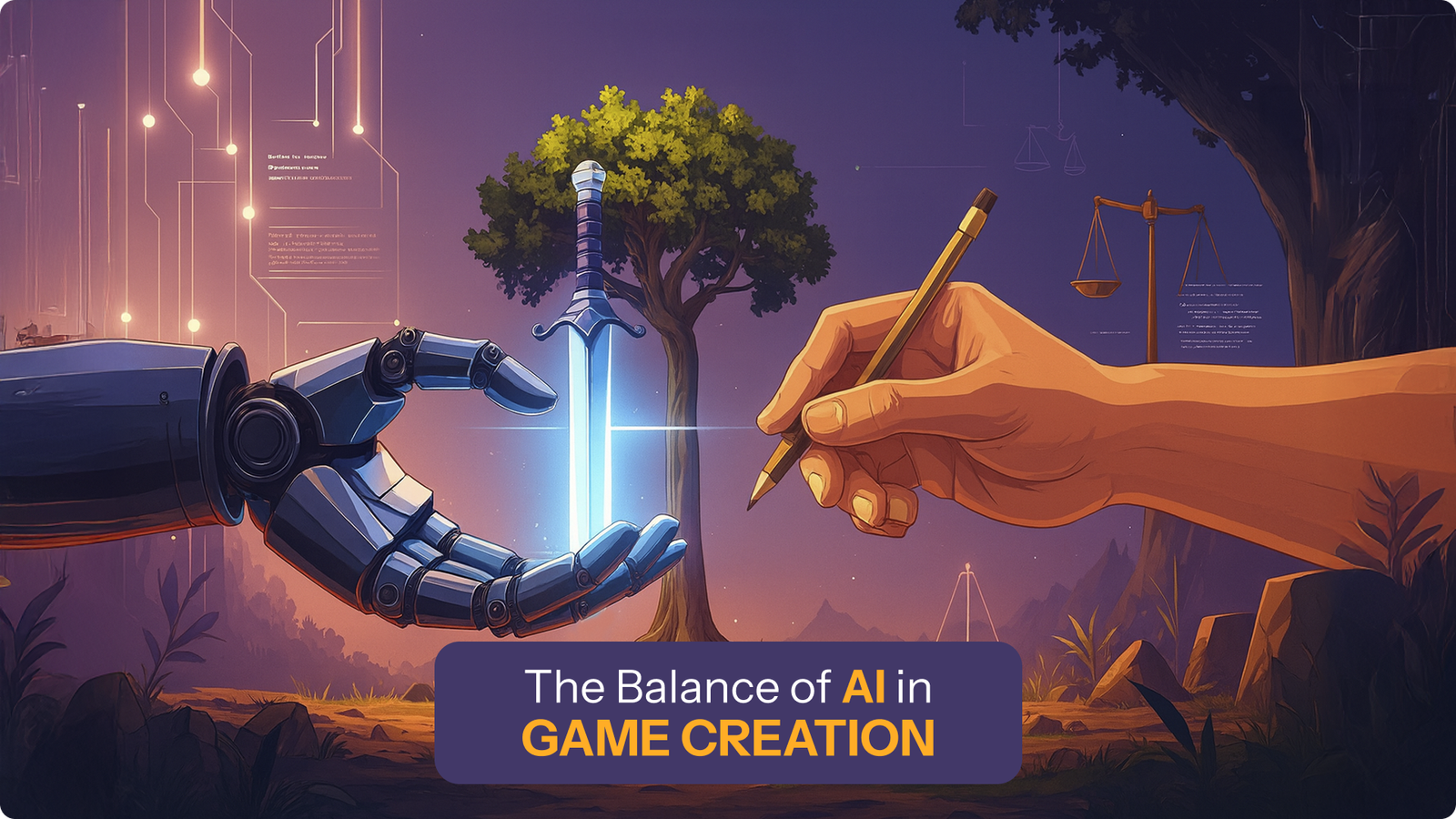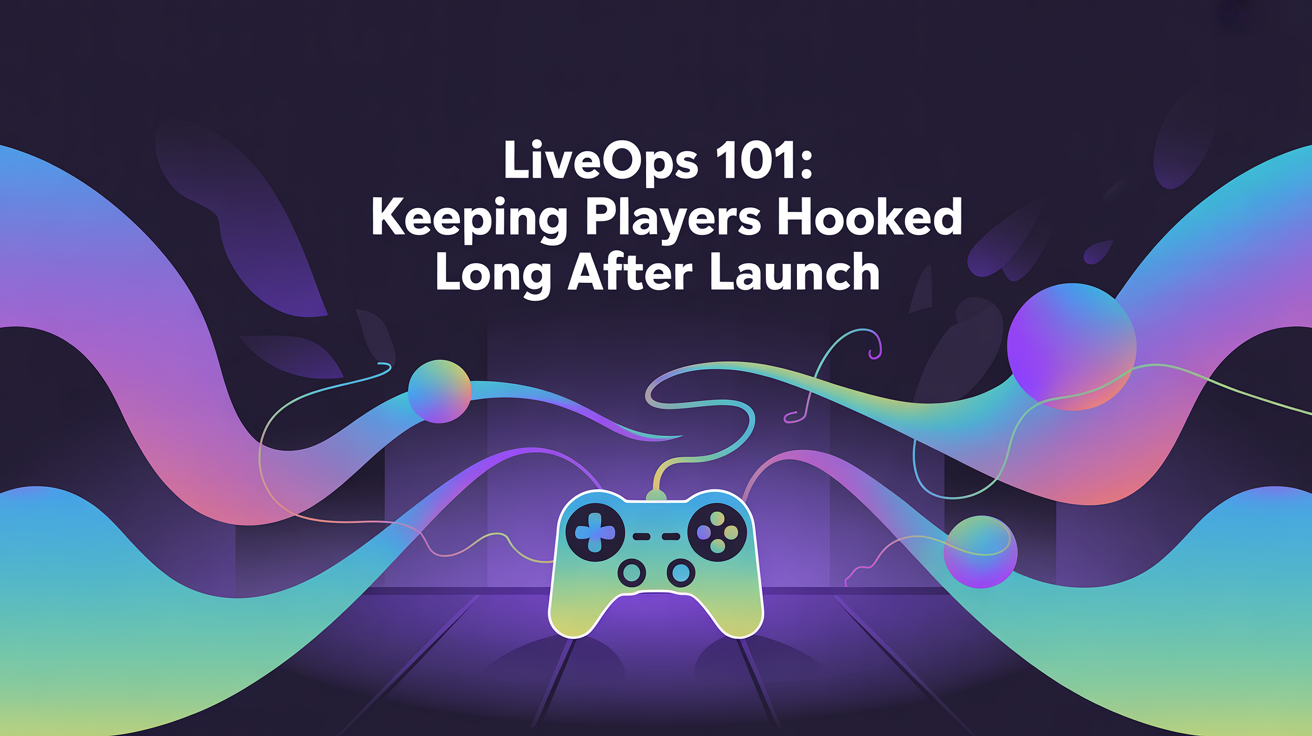Differences in Alpha and Beta Stages of Game Testing
Differences in Alpha and Beta Stages of Game Testing

Contents
Gaming has come a long way since the 90s. Just think about how much has changed between classics like Outlaws and modern games like the Call of Duty series. Games used to be simple, with basic graphics and mechanics. But today, they deliver hyper-realistic visuals, great storylines, and incredibly smooth gameplay.
Stronger processors, advanced graphics rendering, and refined game engines power modern games.
Tech aside, it is truly testing that brings these games to life- did you know the game testing services market is expected to hit $2,022.41 million by 2031?
Through playtesting, game studios understand player behavior and collect feedback. This ensures that every detail is tuned for maximum engagement even before the games hit the shelves.
Games go through two key testing stages: Alpha and Beta. In the alpha stage, developers put together the basic mechanics of the game, with early visuals and placeholder sounds while the game continues to take shape. In the beta stage, real players get involved, testing the game, finding issues, and giving feedback to help improve it before the final release.
In this blog, we’ll break down the differences between the Alpha and Beta stages, showing why these are so important and how they help developers create games that players love.
What is Testing in Game Development?
Testing in game development is the process of identifying bugs and fixing them. It ensures all the features work as planned and the game runs smoothly without glitches.
Game testing starts as the development begins and ramps up in terms of iterations and impact as the project takes shape. Initially, a small QA team focuses on giving quick feedback to catch issues early and keep things on track. Testing happens in stages, each checking specific aspects of the game—such as functionality, performance, and quality.
The Alpha and Beta stages are key milestones in the testing process, but game testing is a much broader journey. It spans five main stages, covering everything from pre-production to post-launch.
Here’s a quick breakdown of these stages to set the context before we dive deeper into Alpha and Beta testing.
| Stages | Description | Key Activities |
| Pre-Production | Identifies potential issues at the early stage of development. | Review design mechanics and create test plans. |
| Alpha Testing | Focuses on core functionality and major features. | Test main features, run smoke tests, and check all game content. |
| Beta Testing | Involves real players in gathering feedback and spotting hidden issues. | Run closed and open betas, stress and load tests, and gather player feedback. |
| Gold Master (GM) Testing | Final checks before release, ensuring the game is polished and compliant. | Verify bugs, test compliance, and check localization. |
| Post-Launch Testing | Ongoing testing to maintain game quality after release. | Monitor live performance, test updates/patches, and run regression tests. |
What is the Alpha Stage?
The Alpha stage is when the game really starts to take shape. This is the time for experimentation, testing out ideas, and making adjustments. The development team will often make key decisions here, deciding what feels right for the game and what might resonate more with players.
The focus during this stage is on functionality, stability, and refining the overall experience. It’s the first time that all the essential elements of the game (controls, character movements, and content) are integrated and working together.
Alpha testing involves:
- Internal Testing: Developers, QA teams, and stakeholders perform hands-on testing to catch issues early. While helpful, it doesn’t always reflect real player experiences.
- Real User Scenarios: Testers mimic real player behavior to uncover hidden bugs and ensure the game works well in diverse scenarios beyond scripted tests.
- Testing in a Controlled Environment: Alpha testing takes place in a controlled setting with specialized tools for tracking bugs and helping identify core issues.
- Black Box and White Box Techniques: Black box testing focuses on player experience, while white box testing checks the code for hidden bugs or performance issues, ensuring both gameplay and functionality are solid.
- Core Functionality Testing: Primary features like controls, character movements, and quest progression are tested to ensure the game works as planned.
Once these tests are conducted, the game moves to the pre-beta phase. It’s the last chance to address major issues and prepare the game for broader public testing.
Common Challenges in Alpha Stage
- Limited Scope
Teams typically run Alpha testing in a controlled setting, which may not fully capture real-world conditions. This can cause certain bugs or performance issues to go unnoticed. These issues only surface later when players try the game in unpredictable situations, such as high loads and unique interactions.
Tip: To better simulate real-world conditions, expand your test cases to include a wider range of scenarios, such as varying hardware setups, network speeds, and player behaviors. Automated testing can be used to increase coverage and find rare-case scenarios.
- Time Constraints
Alpha testing can feel extensive, especially with complex software, as teams need to test all features and identify bugs thoroughly. This process can strain time and resources, delaying project timelines and potentially leaving little room for refinement before the next phase.
Tip: Focus your testing on the most critical features and areas that are most likely to cause problems. Use automated tests for repetitive tasks to save time, but don’t forget to manually check areas that affect how players feel about the game, like controls and flow. You can make use of-
- Selenium for automated testing
- JIRA for bug tracking
What is the Beta Stage?
Beta testing is when the game gets into the hands of real players outside the development team. It presents an opportunity to spot issues, polish the game, and make sure it works well before the official release. While most of the game’s features are typically in place by this stage, unforeseen bugs often emerge when thousands of players interact with the game—issues that are hard for developers to identify on their own.
There are two ways to collect feedback during beta testing:
- Closed Beta, where a selected group of players provides focused input.
- Open Beta involves a broader audience to identify diverse issues and enhance the overall gameplay experience.
The focus during Beta testing is on performance—making sure the game can handle large player loads without crashing or lagging. Developers also gather feedback to ensure the game meets players’ expectations and address any potential issues before launch.
As feedback comes in, developers optimize major systems like audio, art, animation, and effects. These elements are no longer modified unless a critical bug is found.
Once most components are finalized, developers submit the game for certification to platforms like Android, iOS, or Sony. This process often involves some back-and-forth, as platforms may return with a list of issues that need addressing before the game can be approved for release.
Common Challenges in Beta Stage
- Potential User Bias
Beta testers may provide feedback based on personal preferences or expertise, which might not align with the target audience. Teams need to analyze feedback objectively and focus on patterns that match the product’s goals.
Tip: When gathering feedback, make sure to include testers who reflect the diversity of your actual players. Focus on consistent patterns in the feedback rather than individual opinions, and always check if the suggestions align with your game’s goals.
- Resource Intensive
Beta testing requires significant resources to recruit testers, manage feedback, and address issues. Proper planning and efficient tools are essential to streamline the process and avoid delays.
Tip: Use tools that automate feedback collection. Focus on the big issues that matter most, and don’t spread your team too thin. Prioritizing the core problems can save you time and effort.
Similarities between Alpha and Beta Stages
Alpha and beta stages both focus on identifying the bugs and refining the product before its release.
Understanding the similarities between these two stages helps highlight their common objective and their role in creating a more polished and user-friendly product. Let’s dive into it:
- Improving Quality: Both stages focus on identifying and fixing bugs, usability, and performance issues to enhance the game’s quality.
- Relying on Feedback: Feedback from testers in both stages helps developers pinpoint areas for improvement before the final release.
- Contributing to a Successful Launch: Both stages help catch issues early, leading to successful launches with fewer post-launch problems and higher user satisfaction.
- Iterative Process: Testing doesn’t end with Alpha or Beta. Developers continue to refine the game based on feedback and may run additional tests.
While they have some common ground, the Alpha and Beta stages serve different purposes and shouldn’t be confused with each other.
Why Choose Xpress Gaming for Testing?
One of the best ways to overcome the challenges of testing is to partner with the right QA team. A reliable partner can manage the testing process, address the issues effectively, and simplify the entire journey for you.
At Xpress Gaming, we help solve challenges at every stage of game development. Our services cover Unity and Unreal game development, backend support, QA testing, and DevOps to keep games running smoothly. We focus on performance, scalability, and creating an experience that keeps players engaged.
We offer a variety of QA services to address your testing needs and can even build dedicated, custom QA teams to fit the specific needs of your project.
The QA services include:
- Functional Testing
We meticulously test every game feature to ensure optimal performance and a seamless user experience. - Regression Testing
We run regression testing to ensure updates or changes don’t interfere with your game’s functionality. - Compatibility Testing
We verify that your game runs smoothly across all intended devices, operating systems, and platforms. - Localization Testing
Our localization tests ensure your game aligns with cultural and language expectations for every target market. - Metaverse Testing
With our VR expertise, we offer thorough testing for metaverse games to ensure immersive and reliable experiences. - Web3 Game Testing
As pioneers in Web3 game testing, we validate blockchain-based gaming platforms for seamless and secure performance.
Want to make your game stand out? Work with us to catch bugs early, ensure smooth performance on all platforms, and create an experience players will love.
Our expert testing helps you save time, avoid costly fixes later, and deliver a polished, ready-to-launch game. Let’s build a fun gaming experience together!
Client Testimonials Blog ID - 15614
At Kuriosity QA, we are committed to providing the highest quality gaming QA services to our clients in the gaming industry. Here’s what some of our satisfied clients have to say about working with us:



